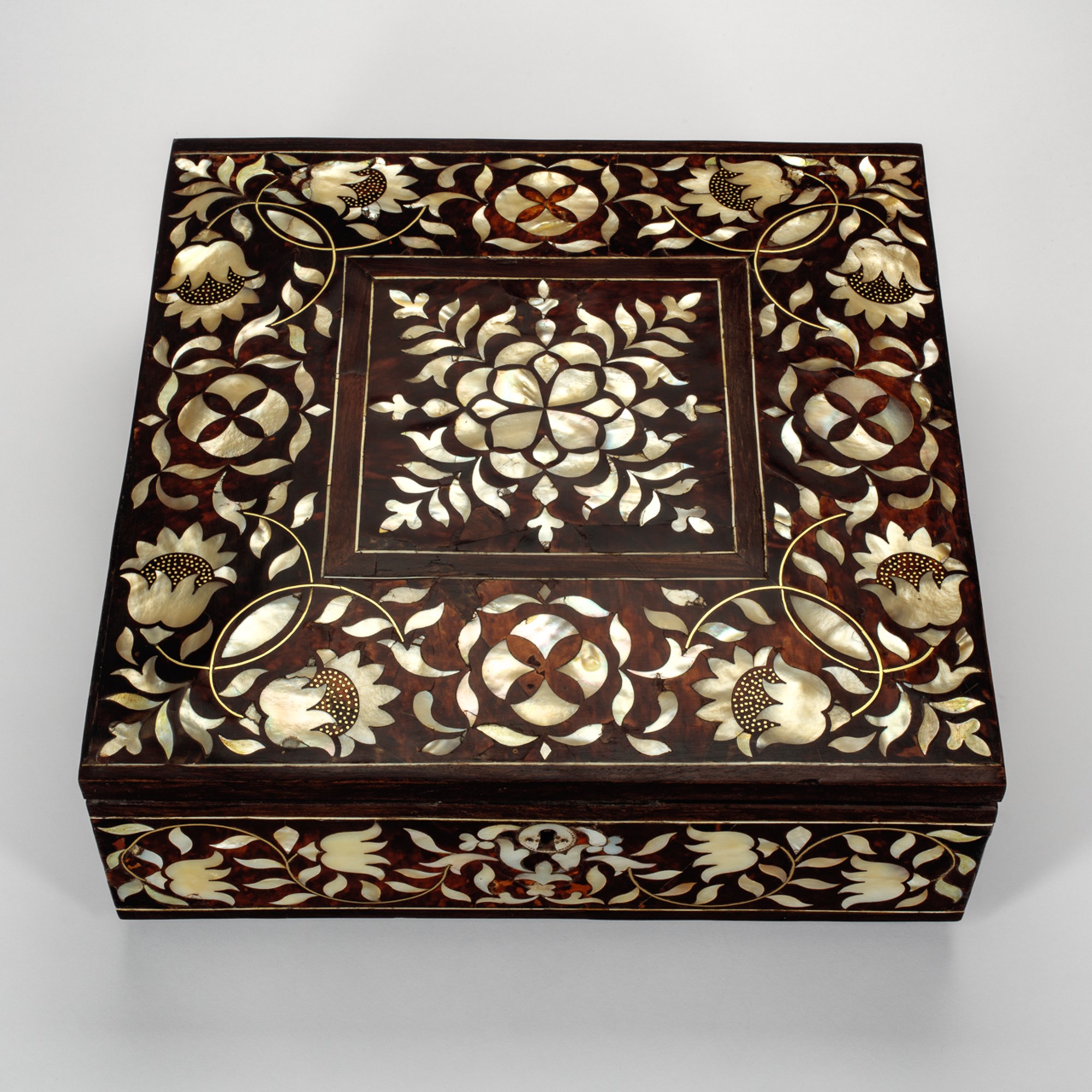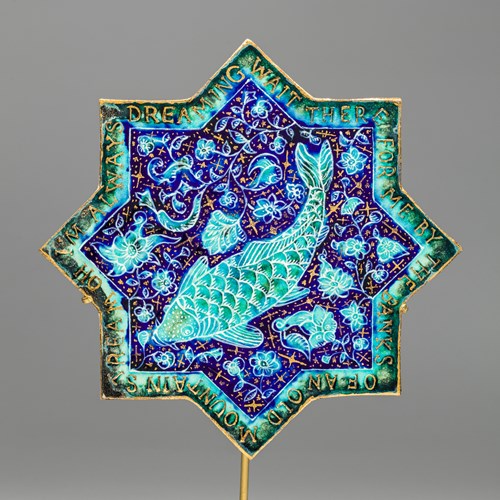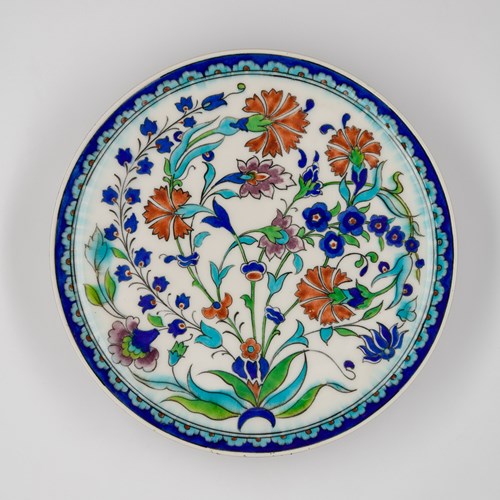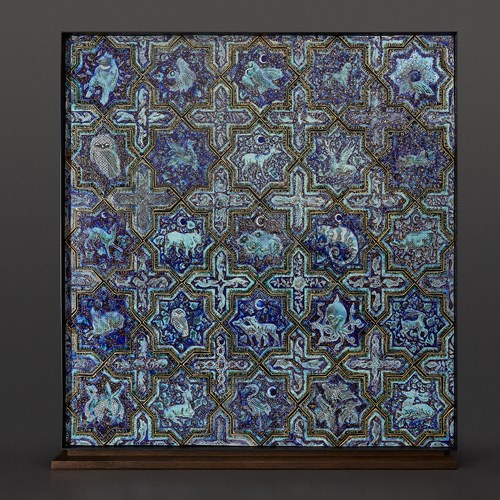Marketplace
A Tortoiseshell and Mother-of-Pearl Box
A Tortoiseshell and Mother-of-Pearl Box
Epoque 18th century
Origine Probably Lima, Peru
Dimension 13 x 38 x 38 cm (5¹/₈ x 15 x 15 inches)
This wooden box is of cushioned square form and decorated all over with inlaid mother-of-pearl with repeating patterns of highly stylised flower-heads on a tortoiseshell ground. The escutcheon rendered in mother-of-pearl is of circular shape. The box sits on four short wooden bun feet.
The form of this box can be found in a similar workbox from a private collection in Arequipa, Peru, which according to Campos may have been used to store needlework and intended for a family’s parlour room inside an important Colonial house.[1] The box published in Campos is, however, dissimilar in its decoration to our box: it has darkened wood carvings on the edges while our box has the rare depiction of birds. There is an 18th-century Peruvian jewellery box in the Museum of Spanish Colonial Art Collection, Santa Fe, New Mexico, which shares striking parallels with our box, seen in the stylised tulips and flower heads, but does not include any representations of birds.
Literature:
Campos Carlés de Peña, M. A Surviving Legacy in Spanish America: Seventeenth- and Eighteenth-Century Furniture from the Viceroyalty of Peru, Ediciones El Viso, Spain, 2013.
Carr, D. Made in Americas: The New World Discovers Asia, MFA Publications, Museum of Fine Arts, Boston, 2015.
Rishel J. J and S. Stratton-Pruitt. The Arts in Latin America 1492- 1820, Philadelphia Museum of Art, Philadelphia, 2006.
Stratton-Pruitt, S. L. (ed.), Journeys to New Worlds: Spanish and Portuguese Colonial Art in the Roberta and Richard Huber Collection, 2013.
[1] Campos Carlés de Peña, p. 283
Stock No.: A5208
The form of this box can be found in a similar workbox from a private collection in Arequipa, Peru, which according to Campos may have been used to store needlework and intended for a family’s parlour room inside an important Colonial house.[1] The box published in Campos is, however, dissimilar in its decoration to our box: it has darkened wood carvings on the edges while our box has the rare depiction of birds. There is an 18th-century Peruvian jewellery box in the Museum of Spanish Colonial Art Collection, Santa Fe, New Mexico, which shares striking parallels with our box, seen in the stylised tulips and flower heads, but does not include any representations of birds.
Literature:
Campos Carlés de Peña, M. A Surviving Legacy in Spanish America: Seventeenth- and Eighteenth-Century Furniture from the Viceroyalty of Peru, Ediciones El Viso, Spain, 2013.
Carr, D. Made in Americas: The New World Discovers Asia, MFA Publications, Museum of Fine Arts, Boston, 2015.
Rishel J. J and S. Stratton-Pruitt. The Arts in Latin America 1492- 1820, Philadelphia Museum of Art, Philadelphia, 2006.
Stratton-Pruitt, S. L. (ed.), Journeys to New Worlds: Spanish and Portuguese Colonial Art in the Roberta and Richard Huber Collection, 2013.
[1] Campos Carlés de Peña, p. 283
Stock No.: A5208
Epoque: 18th century
Origine: Probably Lima, Peru
Dimension: 13 x 38 x 38 cm (5¹/₈ x 15 x 15 inches)
Plus d'œuvres d'art de la Galerie






_T638568988938247202.jpg?width=500&height=500&mode=pad&scale=both&qlt=90&format=jpg)


